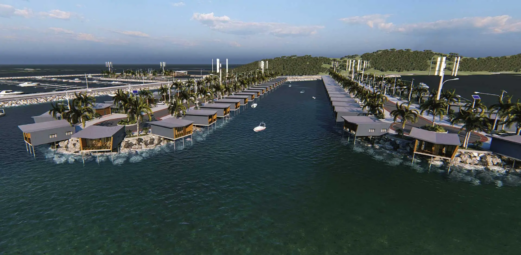Housing is in high demand in Papua New Guinea, especially in Port Moresby and Lae. Large housing developments can increase supply, but regulators and developers must work together to reduce the costs, argues the PNG National Research Institute’s Logea Nao.

There is growing demand for large housing developments in PNG Credit: Rhodes PNG
Housing is in high demand in Papua New Guinea, especially in Port Moresby, Lae and other major urban areas.
One way to meet this demand is by leveraging principles of economies of scale through the building of large housing developments. However, these types of developments are impeded by high costs, due to:
- short supply of State land in urban and peri-urban areas;
- high upfront costs of providing trunk infrastructure such as pipe-borne water;
- electricity and roads; and
- inadequate coordination between private developers and regulatory authorities.
In order to overcome the high costs of large housing developments, ‘scale land’ is required. The more ‘scale land’ that is made available for housing developments, the more houses that can be built, resulting in lower per-unit costs for each house.
Particular attention must be given to trunk infrastructure, given its high costs.
Unlocking scale land
To achieve economies of scale in housing, regulators and developers must work together on four key areas:
1. Formulate standards for ‘scale land’
The optimum size of scale land for any housing development must be identified on a case-by-case basis.
In a 2016 paper, Thomas Webster, former Director of the PNG National Research Institute (NRI), and colleagues proposed that 10 hectares (10,000 m2) of State land be offered to each qualified private developer.
This is a good starting point. However, to guide the determination of the optimum size of land for each housing development project and to prevent inefficiencies, standards and guidelines are necessary.
2. Understand the cost structure
According to three major Port Moresby property developers cited by Webster and colleagues, further work is needed to streamline processes involved in the construction of trunk infrastructure, and to reduce input costs of construction.
Particular attention must be given to trunk infrastructure, given its high costs. For example, a 2017 paper by NRI’s Eugene Ezebilo and Lucy Hamago found that trunk infrastructure cost K12.7 million – or 30 per cent of the total cost – of phase one of the Edai Town housing development north-west of Port Moresby in the mid-2010s.
3. Simplify the bureaucratic process
In their 2016 paper, Webster and colleagues noted that it can take more than 10 years to get from the purchase of a greenfield site to the sale of a residential allotment. They further noted that the process may involve different levels of government – local, provincial and national – and require the input of multiple agencies such as the Department of Lands & Physical Planning, Department of Provincial & Local-Level Government Affairs, the municipal authority, and so on.
In order to simplify the process, regulators must be clear on which documents are required at each step of the process, and transparent as to the length of time needed to review applications.
4. Ensure that affected parties fully appreciate the need for and use of scale land
In their paper, Ezebilo and Hamago showed that State land is nearly exhausted and concluded that customary land must be made more accessible.
In the event that a housing development is being built on customary land (or on customary land acquired by the State for housing development), the Government and property developers must ensure that affected landowners understand and appreciate the need for scale land.
State service providers also need to factor in plans for large housing developments when planning and delivering utility services such as water, sewerage, electricity and roads on these lands.
Conclusion
Finally, successful delivery of large housing developments requires collaboration between housing developers (comprising private developers as well as State-owned housing providers such as National Housing Corporation) and regulators.
Such collaborations can lead to improvements in the housing development process and reductions in costs.
This is an edited version of a PNG National Research Institute Spotlight paper, ‘The need for economies of scale for large housing developments in Papua New Guinea”, written by Logea Nao, a research fellow with the NRI’s Sustainable Land Development Research Program. Access the full version of her paper here. Republished with permission.









Speak Your Mind